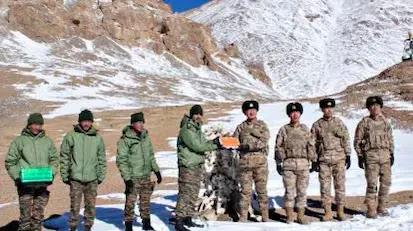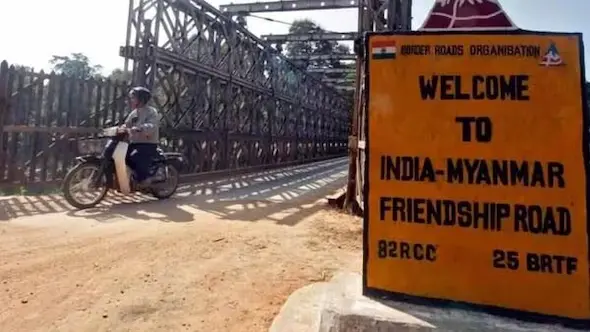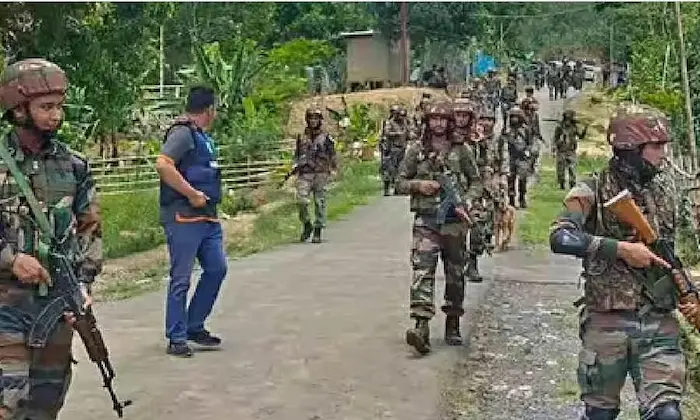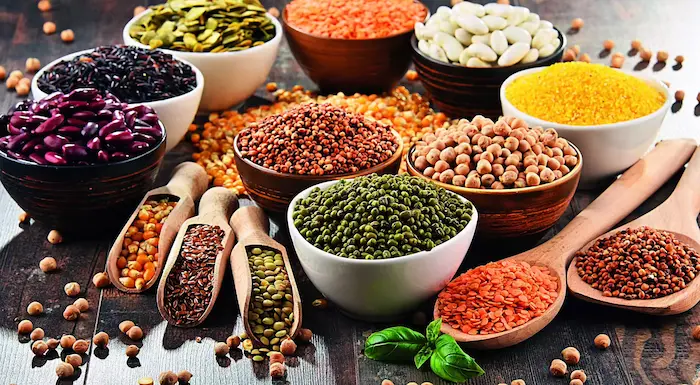1. India–China: The Making of a Border – International Relations

Why in News?
The India–China border, stretching approximately 3,488 km, is among the longest and most complex unresolved borders in the world. Tensions persist in areas like Aksai Chin (western sector) and Arunachal Pradesh (eastern sector). These disputes are rooted in colonial legacies, cartographic inconsistencies, and geopolitical competition—manifested most notably in the 1962 Sino-Indian war and recurring standoffs like Doklam (2017) and Galwan (2020).
Background & Historical Context
- Colonial Legacy:
- Borders inherited from British India (like the McMahon Line) were not mutually accepted.
- The Simla Convention (1914) proposed by the British was accepted by Tibet and British India but rejected by China.
- Post-Independence Miscalculations:
- India relied on colonial-era maps to assert territorial claims.
- China, meanwhile, began building infrastructure, including a highway through Aksai Chin (discovered by India in 1957).
- Key Flashpoint: 1962 War
- After failed negotiations, China launched a military offensive across both sectors.
- India suffered a defeat, and China retained control of Aksai Chin.
Key Disputed Areas
- Aksai Chin (Western Sector):
- Controlled by China but claimed by India as part of Ladakh.
- Strategic for China due to the highway connecting Tibet and Xinjiang.
- Arunachal Pradesh (Eastern Sector):
- Controlled by India; China refers to it as South Tibet.
- The Tawang tract is of special religious and strategic interest to China.
Diplomatic Engagement & Policy Evolution
- 1959: China proposed territorial swap (India retains NEFA, gives up Aksai Chin); India refused.
- 1979 – Atal Bihari Vajpayee’s visit: First step toward normalization post-1962.
- 1988 – Rajiv Gandhi’s visit: A landmark reset in ties; separated border issue from broader relations.
Current Strategic Approach
- Institutional Mechanisms:
- Creation of the Joint Working Group (JWG) and Special Representatives Dialogue.
- Confidence-Building Measures (CBMs):
- Protocols on troop movement, hotline communications, disengagement plans.
- Military & Strategic Preparedness:
- Post-Galwan (2020), India has increased infrastructure and troop deployment along the LAC.
- Diplomatic Channels:
- Despite friction, trade and high-level dialogues continue.
Significance & Implications
- Strategic Rivalry: Affects regional power dynamics, especially in Himalayan geopolitics.
- Global Impact: Influences India’s role in Quad, Indo-Pacific, and its relations with the US and Russia.
- Internal Security: Impacts military planning, border area development, and civilian morale in frontier states.
Exam Connect – Possible Questions
Prelims
1. Consider the following pairs:
| Region | Dispute Type |
|---|---|
| Aksai Chin | Controlled by India |
| Tawang (Arunachal) | Claimed by China |
Which of the pairs is/are correctly matched?
A. 1 only
B. 2 only
C. Both 1 and 2
D. Neither 1 nor 2
Answer: B. 2 only
(Explanation: Aksai Chin is controlled by China but claimed by India, so Pair 1 is incorrect)
2. The Simla Convention of 1914 is significant because:
A. It formally ended the 1962 India-China war.
B. It delineated the McMahon Line between India and China.
C. It established diplomatic ties between India and Tibet.
D. It was a treaty between India and Pakistan on Kashmir.
Answer: B. It delineated the McMahon Line between India and China.
Mains
1. Examine the historical factors that have contributed to the continuing India-China border dispute. In what ways have colonial legacies shaped the present geopolitical tensions? (250 words)
2. Discuss the evolution of India’s foreign policy approach towards China since independence. Highlight key diplomatic milestones and evaluate the effectiveness of existing mechanisms in managing border tensions. (250 words)
2. Free Movement Regime (FMR) along India–Myanmar Border Suspended – Polity

Why in News?
Ahead of PM Modi’s visit to Manipur, the United Naga Council (UNC) announced a trade embargo and protest over the Government of India’s suspension of the Free Movement Regime (FMR) along the India–Myanmar border. The decision is seen as controversial, particularly among borderland tribal communities with transboundary ethnic ties.
What is the Free Movement Regime (FMR)?
- Introduced in the 1970s, the FMR allows residents living within 16 km of the India–Myanmar border to travel across the border without visa restrictions.
- Originally a trust-building mechanism, the FMR was intended to respect the ethnic, cultural, and familial ties of communities like the Kuki, Naga, and Mizo, who straddle both sides of the border.
India–Myanmar Border at a Glance
- Length: 1,643 km
- Bordering States:
- Arunachal Pradesh
- Nagaland
- Manipur
- Mizoram
Recent Developments
Suspension Date:
- February 8, 2024: Ministry of Home Affairs (MHA) officially suspended FMR citing security concerns.
Reasons Cited:
- Internal Security Risks
- Unregulated Immigration
- Demographic Changes in the Northeast
- Cross-border Insurgency & Drug Trafficking
Stakeholder Perspectives
Opposition to FMR Suspension:
- Naga Groups (e.g., UNC):
- Oppose border fencing and FMR suspension.
- Argue it undermines their homeland, land rights, and tribal identity.
- Called for trade blockades and protests.
- Kuki Tribes:
- Strongly oppose fencing and suspension.
- Call it a “Berlin Wall” scenario, separating kinship and cultural ties.
- Have initiated dialogues with MHA negotiators.
Support for Suspension:
- Meitei Groups (Valley Population in Manipur):
- Support fencing and FMR abolition.
- Argue that the regime enabled illegal immigration, contributing to ethnic tensions.
Significance & Implications
- Strategic Balance:
- Balancing national security with cultural autonomy in sensitive border regions.
- Borderland Sensitivities:
- Highlight challenges of border management in areas with transnational ethnic communities.
- Diplomatic Concerns:
- Myanmar’s instability (post-2021 coup) has worsened security and refugee problems.
- Policy Challenge:
- Central government must negotiate a delicate compromise between security, humanitarianism, and cultural preservation.
Exam Connect – Possible Questions
Prelims
1. Which of the following Indian states share a border with Myanmar?
1.Arunachal Pradesh
2.Manipur
3.Nagaland
4.Tripura
5.Mizoram
Select the correct answer using the code below:
A. 1, 2, 3 and 4
B. 1, 2, 3 and 5
C. 2, 3, 4 and 5
D. All of the above
Answer: B. 1, 2, 3 and 5
(Explanation: Tripura does not border Myanmar)
2. The Free Movement Regime (FMR), recently in news, pertains to:
A. Visa-free movement for Indian citizens within SAARC countries.
B. Indigenous tribal movement across India-Nepal border.
C. Borderland movement between India and Myanmar.
D. India’s trade policy with ASEAN countries.
Answer: C. Borderland movement between India and Myanmar.
Mains
1.Discuss the implications of suspending the Free Movement Regime (FMR) along the India–Myanmar border on India’s internal security and tribal relations. How should the government balance national security with cultural and ethnic sensitivities? (250 words)
2.Examine the challenges of border management in Northeast India, especially in the context of transnational ethnic communities and insurgency. What steps can be taken to ensure both security and inclusiveness? (250 words)
3. New Immigration and Foreigners Act, 2025 Comes into Effect – Polity

Why in News?
The Immigration and Foreigners Act, 2025 came into force on September 1, 2025, marking a major overhaul of India’s immigration and foreigner management laws. It consolidates and modernizes previously scattered and outdated laws to ensure streamlined, digital, and uniform regulation of foreign nationals in India.
Key Objectives of the Act
- Legal Consolidation: Replaces four separate legislations with a single comprehensive framework.
- Centralized Regulation: Establishes uniform entry, stay, monitoring, and exit rules for foreign nationals.
- Modernization: Introduces digital recordkeeping, mandatory reporting, and graded penalties.
Acts Repealed by the New Law
The 2025 Act replaces the following:
- Passport (Entry into India) Act, 1920
- Registration of Foreigners Act, 1939
- Foreigners Act, 1946
- Immigration (Carriers’ Liability) Act, 2000
Why Was This Overhaul Needed?
- Fragmentation: Multiple outdated laws led to confusion and inconsistent enforcement.
- Security Gaps: Lack of real-time monitoring affected national security management.
- Global Best Practices: The need to align with international norms in digital immigration systems.
Salient Features of the Immigration and Foreigners Act, 2025
1. Mandatory Valid Entry Documents
- All foreign entrants must possess:
- A valid passport or travel document
- Visa, where applicable
- Entry/exit only allowed through designated immigration posts.
2. Role of Immigration Officers
- Officers have powers to:
- Approve or deny entry
- Take decisions based on national security or public health.
3. Mandatory Reporting Obligations
- Accommodation providers (e.g., hotels, homestays) must:
- Report arrival and departure of foreign nationals within 24 hours.
- Healthcare providers must also report if foreign nationals access medical care.
4. Creation of a Digital Monitoring System
- All notifications must be submitted online, creating a central digital database for tracking.
5. Penalties and Fines
- Fines for violations range between ₹10,000 to ₹5,00,000, depending on the severity.
- Graduated fine system introduced to:
- Reduce burden on vulnerable groups
- Encourage compliance rather than punishment.
6. Centralization of Power
- Central government holds primary authority.
- Can delegate functions to states/UTs to ensure effective ground-level implementation.
7. Exemptions
- Citizens of Nepal and Bhutan are exempt.
- Certain refugees and military personnel are also excluded from standard visa requirements.
Significance of the Act
- National Security: Enhances real-time monitoring to prevent illegal stay or entry.
- Governance Efficiency: Reduces bureaucratic delays and legal ambiguities.
- Digital Transformation: Supports India’s move towards paperless, tech-driven governance.
- Federal Coordination: Encourages cooperative functioning between Centre and States.
Possible Challenges Ahead
- Implementation: Digital infrastructure and inter-agency coordination may lag in remote areas.
- Privacy Concerns: Centralized digital records require strict data protection norms.
- Burden on Service Providers: Hotels and hospitals may face administrative pressure to comply promptly.
Exam Connect – Possible Questions
Prelims
1. Which of the following laws has NOT been repealed by the Immigration and Foreigners Act, 2025?
A. Passport (Entry into India) Act, 1920
B. Registration of Foreigners Act, 1939
C Citizenship Act, 1955
D. Immigration (Carriers’ Liability) Act, 2000
Answer: C. Citizenship Act, 1955
(Explanation: The Citizenship Act, 1955 is still in force and governs citizenship, not immigration procedures.)
2. Under the new Immigration and Foreigners Act, 2025, who among the following are exempt from standard visa requirements?
1.Citizens of Bhutan
2.Citizens of Nepal
3.Afghan Refugees
4.Indian-Origin Overseas Citizens (OCIs)
Select the correct answer using the code below:
A. 1 and 2 only
B. 1, 2 and 3 only
C. 1, 2 and 4 only
D. All of the above
Answer: B. 1, 2 and 3 only
Mains
1.Discuss the key features of the Immigration and Foreigners Act, 2025. In what ways does this legislation address the gaps in India’s previous immigration laws? (250 words)
2.Evaluate the impact of digitizing immigration records and enforcing mandatory reporting under the Immigration and Foreigners Act, 2025. How can the government ensure a balance between national security and individual privacy? (250 words)
4. Manipur Violence: Centre Signs Revised Suspension of Operations (SoO) Pact with Kuki-Zo Groups – Polity

Why in News?
The Central Government, in collaboration with the Manipur state government, has signed a revised Suspension of Operations (SoO) pact with 24 Kuki-Zo insurgent groups, under the umbrella of Kuki National Organisation (KNO) and United People’s Front (UPF). This comes in the backdrop of ethnic violence in the state, ongoing since May 2023, and precedes PM Modi’s planned visit to Manipur.
Background: The Manipur Conflict
- Since May 2023, ethnic clashes between the Meitei (valley-based) and Kuki-Zo (hill-based) communities have led to violence, displacement, and social unrest.
- Accusations include illegal immigration, land rights violations, and perceived administrative bias.
- National Highway-02, a vital lifeline, had been blocked by Kuki groups — recently reopened as a goodwill gesture under the SoO pact.
What is the Suspension of Operations (SoO) Pact?
- A tripartite agreement involving:
- Ministry of Home Affairs (MHA)
- Government of Manipur
- Insurgent groups (now under KNO & UPF)
- Originally signed in 2008, it aims to suspend armed operations in return for:
- Dialogue
- Relocation to designated camps
- Progress toward a political solution within the Constitution
Key Features of the Revised SoO Pact (2025)
Stricter Monitoring & Verification
- Joint Monitoring Group (JMG) led by Manipur’s Principal Secretary (Home)
- Verifies cadre identities and removes foreign nationals from camps (especially concerns of illegal immigration from Myanmar)
Camp Relocation
- Reduction to six designated camps each for KNO and UPF
- Camps relocated away from highways and populated areas to prevent misuse for launching attacks
Financial Transparency
- Stipends to cadres only via Aadhaar-linked bank accounts
- Only verified individuals receive financial assistance
Prohibited Activities
- No recruitment of new members
- No carrying weapons outside designated areas
- No offensive or insurgent operations
Commitment to Indian Constitution
- All groups must respect the Constitution and uphold the territorial integrity of Manipur
Stakeholder Responses
| Group | Response |
|---|---|
| Kuki Civil Society | Agreed to reopen NH-02; positive towards stricter pact. |
| Zomi Council | Disputed KZC’s (Kuki-Zomi Coordination) authority; reveals intra-tribal divisions. |
| Meitei Community | Welcomed camp relocation; long-standing demand to avoid militant operations. |
| Naga Groups | Objected to exclusion; threatened trade embargo due to unresolved Myanmar border issues. |
Significance & Implications
- Confidence-Building: Improves chances of peaceful resolution through structured dialogue.
- Security Management: Aims to reduce militant operations and prevent insurgent activity under the guise of ceasefire.
- Ethnic Harmony: Addresses Meitei fears of militant proximity; shows government willingness to listen to tribal concerns.
- Broader Peace Process: Indicates the Centre’s plan to integrate various insurgent groups in Northeast India into a constitutional framework.
Challenges Ahead
- Deepening Intra-Community Divisions: E.g., Zomi vs Kuki-Zo disputes.
- Exclusion of Naga Groups: May cause new conflicts or renew old ones.
- Implementation Hurdles: Monitoring compliance in hilly and forested terrain is logistically difficult.
Exam Connect – Possible Questions
Prelims
1. Consider the following statements regarding the Suspension of Operations (SoO) pact in Manipur:
1.It is a bilateral agreement between the Manipur government and Naga insurgent groups.
2.The revised 2025 pact mandates Aadhaar-linked payments to insurgent cadres.
3.The SoO agreement prohibits recruitment and carrying of arms by the signatories.
Which of the above statements are correct?
A. 1 and 2 only
B. 2 and 3 only
C. 1 and 3 only
D. All of the above
Answer: B. 2 and 3 only
(Explanation: Statement 1 is incorrect – it is a tripartite pact with Kuki-Zo groups, not Naga groups.)
2. The Joint Monitoring Group (JMG), as per the revised SoO pact of 2025, is headed by:
A. Union Home Secretary
B. Governor of Manipur
C. Principal Secretary (Home), Manipur
D. Director General of Assam Rifles
Answer: C. Principal Secretary (Home), Manipur
Mains
1.Critically examine the revised Suspension of Operations (SoO) pact signed with Kuki-Zo groups in Manipur. How does it attempt to balance internal security and ethnic reconciliation? (250 words)
2.Discuss the challenges of insurgency management in Northeast India. How effective are ceasefire mechanisms like the SoO pact in resolving long-standing ethnic conflicts? (250 words)
5. NITI Aayog Unveils Roadmap for Self-Sufficiency in Pulses by 2047 – Economy

Why in News?
NITI Aayog has released a strategic roadmap to make India self-sufficient in pulses production by the year 2047—a critical step to reduce import dependency, enhance nutritional security, and support farmer livelihoods.
Background: The Role of Pulses in India
- Pulses are vital for protein intake, especially in India’s largely vegetarian population.
- Rich in iron, zinc, and other micronutrients, pulses combat malnutrition and improve health outcomes.
- Environmentally sustainable: Pulses fix nitrogen in soil, improve fertility, and require less water than cereals.
Current State of Pulses in India
- India is the world’s largest producer, consumer, and importer of pulses.
- 2015-16:
- Production dipped to 16.35 million tonnes (MT)
- Imports touched 6 MT (29% dependency)
- 2022-23:
- Production rose to 26.06 MT (a 59.4% increase)
- Imports dropped to 10.4% of total demand
Major Producing States
- Top 3 States:
- Madhya Pradesh
- Maharashtra
- Rajasthan
- Together, they contribute over 55% of total production.
- Top 10 states account for 91% of national output.
Challenges to Pulses Self-Sufficiency
| Challenge | Details |
|---|---|
| Rain-fed Cultivation | ~80% of pulses are grown in rain-fed areas, making them climate-vulnerable. |
| Low Yield | Productivity per hectare is lower than global averages. |
| Import Dependence | Despite gains, imports still needed for consumer demand and buffer stocks. |
| Inadequate MSP Awareness | Many farmers unaware or unable to access MSP benefits. |
NITI Aayog’s Strategic Recommendations
1. Area Retention & Diversification
- Encourage region-specific pulse crop clusters.
- Prevent shifting of farmers from pulses to water-intensive crops.
2. Technology Adoption
- Customized farming tech packages tailored to agro-ecological sub-regions.
- Mechanization, drip irrigation, and precision farming in pulse-growing belts.
3. Seed Quality & Distribution
- Provide seed treatment kits in 111 high-potential districts.
- Promote certified seed usage to boost productivity.
4. Cluster-Based Production Hubs
- Launch “One Block–One Seed Village” model.
- Leverage Farmer Producer Organisations (FPOs) for training, seed multiplication, and marketing.
5. Mission for Atmanirbharta in Pulses
- A six-year program focusing on:
- Pigeonpea (Arhar)
- Black gram (Urad)
- Lentils (Masoor)
Future Projections
| Year | Projected Production |
|---|---|
| 2030 | 30.59 million tonnes |
| 2047 | 45.79 million tonnes |
Significance Beyond Production
- Nutritional Security: High-protein pulses help fight malnutrition, especially among children and women.
- Environmental Impact:
- Nitrogen fixation enhances soil health
- Lower water use than paddy or wheat
- Helps in climate-resilient agriculture
- Economic Impact:
- Supports 5 crore+ farmers and families
- Boosts rural incomes, especially in dryland regions
Conclusion
While India has made substantial progress in increasing pulses production over the past decade, self-sufficiency by 2047 will require:
- Continued government investment
- Region-specific policies
- Strong research-extension-farmer linkages
- Market and MSP reforms
NITI Aayog’s roadmap presents a scientific, structured, and inclusive approach to make India both nutritionally secure and agriculturally sustainable.
Exam Connect – Possible Questions
Prelims
1. Consider the following statements regarding pulses in India:
1.India is the largest importer of pulses in the world.
2.Pulses require more water than rice and wheat crops.
3.Pulses improve soil fertility through nitrogen fixation.
Which of the above statements is/are correct?
A. 1 and 2 only
B. 2 and 3 only
C. 1 and 3 only
D. 1, 2, and 3
Answer: C. 1 and 3 only
(Explanation: Pulses require less water, not more, compared to cereals like rice.)
2. The “One Block–One Seed Village” model, recently recommended by NITI Aayog, is aimed at:
A. Encouraging monoculture in high-yielding zones
B. Promoting genetically modified seeds
C. Localized seed production through FPOs for pulses
D. Boosting hybrid crop exports
Answer: C. Localized seed production through FPOs for pulses
Mains
1.Despite being the largest producer of pulses, India continues to import them. Discuss the reasons behind this paradox and examine how NITI Aayog’s recent plan seeks to address these challenges. (250 words)
2.Pulses are central to India’s goals of nutritional security and climate resilience. Examine the ecological and health benefits of pulses and suggest policy interventions needed to achieve self-sufficiency by 2047. (250 words)
6.India Eyes Participation in Malacca Straits Patrol – International Relations

Why in News?
Singapore’s Prime Minister recently acknowledged India’s intention to join the Malacca Straits Patrol (MSP) — a joint maritime security initiative currently involving Malaysia, Indonesia, Thailand, and Singapore. This move signifies India’s growing strategic engagement in Southeast Asia and the Indo-Pacific.
What is the Strait of Malacca?
- A narrow maritime passage in Southeast Asia, it connects the Indian Ocean (Andaman Sea) to the Pacific Ocean (South China Sea).
- One of the most strategically important and congested trade routes in the world.
Geographical Overview
| Feature | Details |
|---|---|
| Location | Between Malay Peninsula (NE) and Sumatra, Indonesia (SW) |
| Length | ~800–900 km |
| Width | 65 km (narrowest) to 250 km (widest) |
| Depth | Shallow in the south (~37 m), limiting passage for large ships |
| Ports | Singapore, Port Klang, Penang, and Melaka – among the busiest in the world |
Strategic & Economic Importance
1. Global Chokepoint
- Serves as the shortest maritime route between the Middle East/Africa and East Asia.
- Roughly 60% of global maritime trade passes through this strait.
2. Energy Security
- Vital for transporting Middle Eastern oil to China, Japan, and Southeast Asia.
- Any disruption can spike global oil prices and disturb supply chains.
3. Geopolitical Significance
- China’s dependence on the strait for energy imports has led to its “Malacca Dilemma”.
- Attracts strategic interest from:
- India – to ensure free navigation and secure maritime trade
- China – for energy routes and naval reach
- USA – as part of freedom of navigation operations
- ASEAN states – regional stability and trade
Malacca Straits Patrol (MSP)
- Launched in 2004 by Malaysia, Indonesia, Thailand, and Singapore
- Consists of:
- Air Patrols (Eyes-in-the-Sky)
- Sea Patrols
- Intelligence Sharing
- Aims to combat piracy, smuggling, and maritime terrorism
India’s Interest
- Seeks to:
- Enhance maritime domain awareness (MDA)
- Secure energy trade routes
- Strengthen Act East Policy and Indo-Pacific outreach
- India’s participation would boost multilateral cooperation in Southeast Asia and counterbalance China’s influence.
India’s Maritime Strategy in the Region
- SAGAR Doctrine (Security and Growth for All in the Region) underlines India’s role in Indo-Pacific.
- Strategic military access via:
- Andaman & Nicobar Command
- Naval cooperation with Singapore, Indonesia, and Vietnam
- India’s increased focus on Quad, ASEAN, and Indian Ocean Rim Association (IORA) aligns with this move.
Geopolitical Implications
- Strengthens India-ASEAN ties
- Signals India’s emergence as a net security provider in the region
- May lead to China’s countermeasures in nearby waters, such as the South China Sea
- Enhances multilateral maritime governance
Conclusion
India’s interest in the Malacca Straits Patrol marks a significant development in its maritime diplomacy and security strategy. As trade, energy, and strategic interests converge in the Indo-Pacific, the Strait of Malacca will remain a central node in global geopolitics. India’s proactive engagement in its security mechanisms underscores its ambition to be a regional maritime power and a responsible stakeholder in maintaining freedom of navigation.
Exam Connect – Possible Questions
Prelims
1. The Strait of Malacca connects which of the following water bodies?
A. Arabian Sea and Red Sea
B. Bay of Bengal and South China Sea
C. Arabian Sea and South China Sea
D. Bay of Bengal and Mediterranean Sea
Answer: B. Bay of Bengal and South China Sea
2. Consider the following statements:
1.The Strait of Malacca lies between the Malay Peninsula and Sumatra.
2.It is one of the deepest maritime channels in the world.
3.It serves as a major shipping route for energy trade between the Middle East and East Asia.
Which of the statements are correct?
A.1 and 2 only
B. 1 and 3 only\
C. 2 and 3 only
D. All of the above
Answer: B. 1 and 3 only
(Statement 2 is incorrect – the strait is relatively shallow, especially at its southern end.)
Mains
1.Discuss the strategic and economic importance of the Strait of Malacca for India. How does India’s participation in the Malacca Straits Patrol reflect its maritime security goals? (250 words)
2.”The Strait of Malacca is both a lifeline and a chokepoint for global trade.” In light of this statement, examine the challenges and opportunities for India in securing sea lanes of communication in the Indo-Pacific. (250 words)

